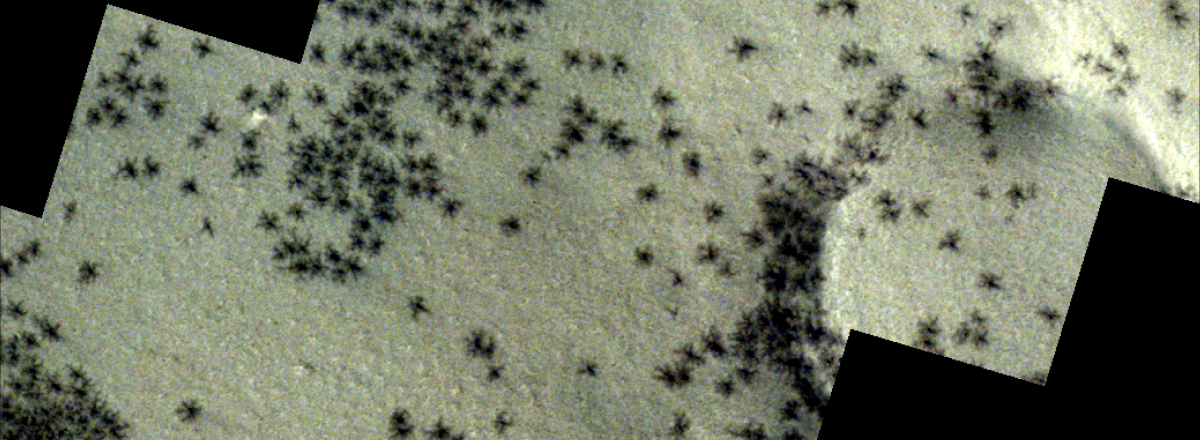Scientists Recreate Mars’ Mysterious ‘Spiders’ in NASA Lab
The experiment confirmed the leading theory, known as the Kieffer model, which suggests that the spiders form when sunlight heats carbon dioxide ice, causing it to sublimate directly into gas.

For the first time, scientists have successfully recreated the mysterious spider-like formations on Mars, known as araneiform terrain, in a laboratory setting. These eerie formations, found only in the planet's southern hemisphere, have baffled scientists since their discovery in 2003. They resemble dark, spindly spider shapes stretching across the Martian surface.
Researchers at NASA’s Jet Propulsion Laboratory, led by Lauren Mc Keown, used a special chamber to mimic Martian conditions. The experiment confirmed the leading theory, known as the Kieffer model, which suggests that the spiders form when sunlight heats carbon dioxide ice, causing it to sublimate directly into gas. As the gas builds pressure beneath the ice, it erupts, releasing dark dust and creating the spider-like patterns.
The experiment also revealed a surprise: the gas often escapes from cracks formed within the icy soil, adding new details to the original model. Scientists hope these findings will improve our understanding of Martian geology and the planet’s surface processes.

